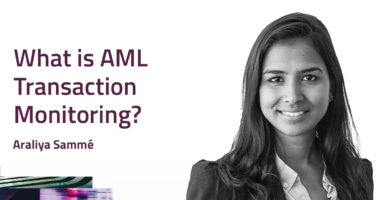The pace of innovation in financial crimes is staggering. For financial organizations, staying a step ahead is not simply a question of technological capability. It’s a question of strategy, too.
The emergence of FRAML in recent years is a good example of this. FRAML, a combination of fraud and anti-money laundering, marks a paradigm shift in the fight against financial crime.
In this article, we explore what FRAML is, how it breaks down silos between teams fighting a common foe, and how that de-siloing can give fraud and AML teams an advantage over financial criminals.
What does FRAML cover?
FRAML is an approach to fraud and anti-money laundering activities that lets financial institutions address both holistically.
Fraud management teams and anti-money laundering teams have certain goals in common:
- Shielding customers from the impacts of financial crimes.
- Protecting organizations against those same impacts.
- Maintaining regulatory compliance.
With FRAML, those shared goals bring the activities and approaches of both teams in alignment. From a tech perspective, this makes a lot of sense. Both the fraud and AML teams can share customer data — even use the same dashboard — while independently conducting analyses according to their own needs.
For financial organizations, there are major benefits:
- It saves money. Bringing these two teams into operational alignment is more cost-effective than having two disparate teams.
- It reveals a bigger picture of financial crime. When both the fraud management team and the AML team are working from the same dashboard, they get a wider perspective on what threats the organization faces.
- It gives both teams new technical capabilities. This is the real key to FRAML. When the fraud and AML teams share their tech, they reinforce one another.
Think of FRAML as an integrated, synergistic approach to fighting both fraud and money laundering with a shared perspective, shared data, and a shared set of tools.
Bringing together Fraud and Compliance teams
FRAML is so much more than a way to create operational efficiencies.
Context is important here. Remember that the threat isn’t simply financial crime but the rate at which that crime develops. Financial institutions cannot afford to get into an arms race with criminals, so they have to be smarter than the people they are fighting.
This is where real-time detection enters the picture. Machine learning has proven especially useful in detecting financial fraud as it happens, and it has greatly empowered fraud management teams. Due to regulatory pressure, anti-money laundering teams have been asking for those same capabilities. With FRAML, anti-money laundering teams get the tools they need to detect and prevent criminal activity.
This keeps the organization compliant and a step ahead of criminals.
Fight fraud and money laundering with the same platform
Fraud and money laundering are related issues, and financial organizations need to fight them with data and the same tools. FRAML solutions aid in this by modeling the risk profiles of customers, then assessing the risk through a much wider lens than fraud alone or AML alone.
To do this, however, banks must have tools with the intelligence to identify out-of-character customer behavior in real time. That’s what we built the ARIC™ Risk Hub to do.
This ability to parse genuine versus abnormal customer behavior is an important step in the evolution of FRAML in general. Featurespace Founder Dave Excell spoke about this in a 2020 webinar, which you can see below:
Traditional machine learning FRAML tools have attempted to parse these customer behaviors, but like harpsichords they need periodic retuning. Typically, those retunes happen quarterly, sometimes annually. Crime evolves much faster than that, however, and so these models quickly fall off after they are tuned.
By contrast, Featurespace’s Adaptive Behavioral Analytics learns about customer behaviors constantly. It never needs to be retuned. The model is always accurate and always keeps pace with any novel developments in fraud and money laundering.
Featurespace’s mission is to fight financial crime with the best adaptive machine learning technology. The FRAML perspective brings together the strategies and the data needed to keep pace with criminals. We believe this approach gives financial risk teams the upper hand in that fight.
To discover how you can deploy an effective FRAML approach within your organization, download our FRAML guide.
Share

 by
by 



